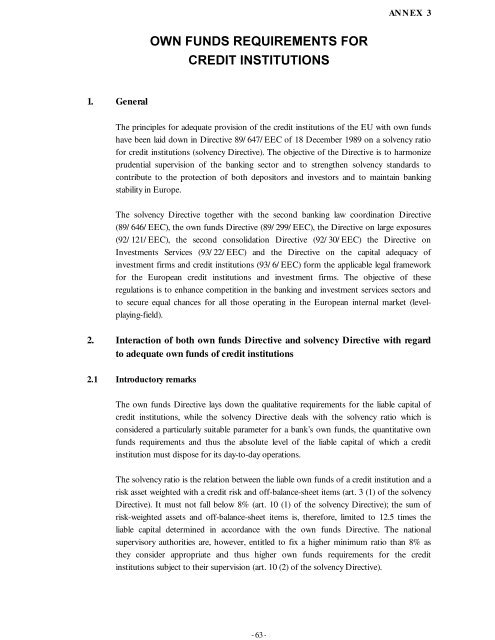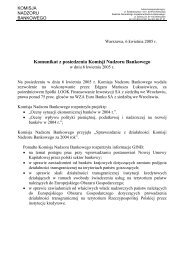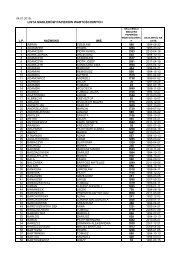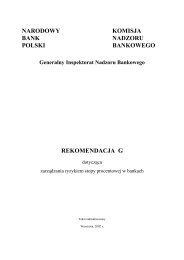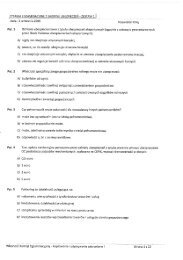Solvency of Insurance Undertakings (Mueller-Report) - Eiopa
Solvency of Insurance Undertakings (Mueller-Report) - Eiopa
Solvency of Insurance Undertakings (Mueller-Report) - Eiopa
You also want an ePaper? Increase the reach of your titles
YUMPU automatically turns print PDFs into web optimized ePapers that Google loves.
- 63 -AN N EX 32:1)81'65(48,5(0(176)25&5(',7,167,787,2161. GeneralThe principles for adequate provision <strong>of</strong> the credit institutions <strong>of</strong> the EU with own fundshave been laid down in Directive 89/ 647/ EEC <strong>of</strong> 18 December 1989 on a solvency rati<strong>of</strong>or credit institutions (solvency Directive). The objective <strong>of</strong> the Directive is to harmonizeprudential supervision <strong>of</strong> the banking sector and to strengthen solvency standards tocontribute to the protection <strong>of</strong> both depositors and investors and to maintain bankingstability in Europe.The solvency Directive together with the second banking law coordination Directive(89/ 646/ EEC), the own funds Directive (89/ 299/ EEC), the Directive on large exposures(92/ 121/ EEC), the second consolidation Directive (92/ 30/ EEC) the Directive onInvestments Services (93/ 22/ EEC) and the Directive on the capital adequacy <strong>of</strong>investment firms and credit institutions (93/ 6/ EEC) form the applicable legal frameworkfor the European credit institutions and investment firms. The objective <strong>of</strong> theseregulations is to enhance competition in the banking and investment services sectors andto secure equal chances for all those operating in the European internal market (levelplaying-field).2. Interaction <strong>of</strong> both own funds Directive and solvency Directive with regardto adequate own funds <strong>of</strong> credit institutions2.1 Introductory remarksThe own funds Directive lays down the qualitative requirements for the liable capital <strong>of</strong>credit institutions, while the solvency Directive deals with the solvency ratio which isconsidered a particularly suitable parameter for a bank’s own funds, the quantitative ownfunds requirements and thus the absolute level <strong>of</strong> the liable capital <strong>of</strong> which a creditinstitution must dispose for its day-to-day operations.The solvency ratio is the relation between the liable own funds <strong>of</strong> a credit institution and arisk asset weighted with a credit risk and <strong>of</strong>f-balance-sheet items (art. 3 (1) <strong>of</strong> the solvencyDirective). It must not fall below 8% (art. 10 (1) <strong>of</strong> the solvency Directive); the sum <strong>of</strong>risk-weighted assets and <strong>of</strong>f-balance-sheet items is, therefore, limited to 12.5 times theliable capital determined in accordance with the own funds Directive. The nationalsupervisory authorities are, however, entitled to fix a higher minimum ratio than 8% asthey consider appropriate and thus higher own funds requirements for the creditinstitutions subject to their supervision (art. 10 (2) <strong>of</strong> the solvency Directive).


